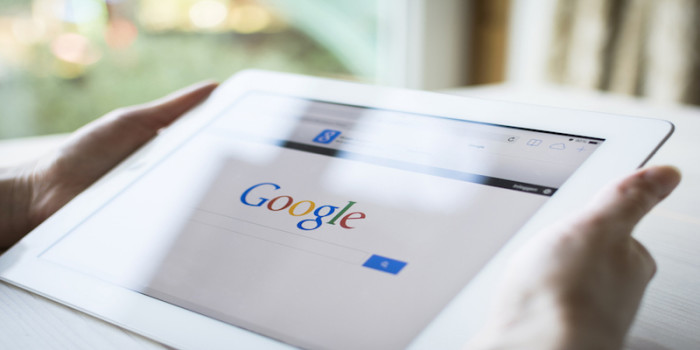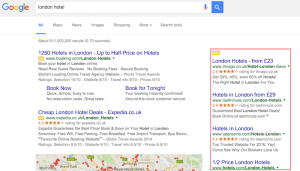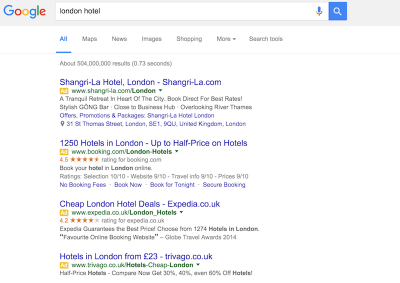
Google changes the goalposts again
It’s all change on the Google search engine results pages (SERPs). Since mid-February, Google has retired pay-per-click (PPC) ads from the right hand space on page one, with the exception of image-led product listing ads (PLAs).
Where have these ads gone? Well, in short, Google have allowed more to sit across the top of the SERPs and some at the bottom.
Previously, a search query for a hotel looked like this on page one:

Now, it looks like this:

For paid-for advertisers, analysis reveals that the change is wholly positive, with little reduction in click-through rate (CTR) for the bottom ads, whilst all ads are now eligible for the full suite of ad extensions, which were previously reserved only for those ads in prime position.
What does this mean for the SEO community and organic results? In a nutshell, the stakes just got raised. Organic results will now appear below the fold on page one, although the silver line is that some searches are retuning nine organic listings rather than the previous eight.
The advertisers who will come good from this change are those who have a solid SEO strategy: namely, a website whose pages have defined and unique keyword aims, backed up by solid meta data optimisation and relevant on-page copy.
If, for example, you decide that yourwebsite.com/we-sell-red-dresses should rank for terms relating to red dresses, your URL, meta data and on-page copy should all reflect this. What’s more, any outreach that you do should encourage people to link back to this deeper level on your website.
There’s absolutely no need to worry about the latest changes in SERP architecture: it’s simply time to sort out the administrative side of your SEO campaign. And, if you’re in paid search, it’s time to raise a glass, all whilst keeping your eye on the Google search ball for the next update!
Want more information? Contact us here
